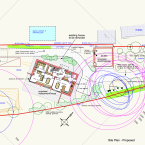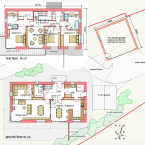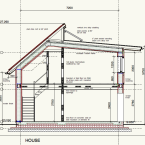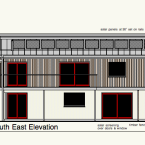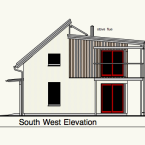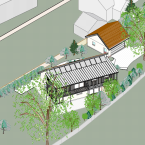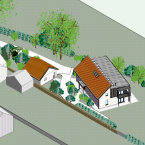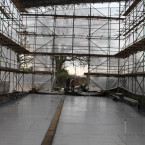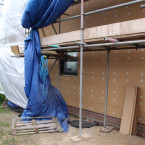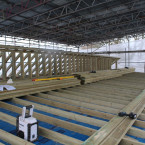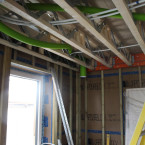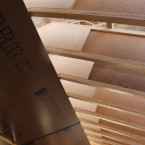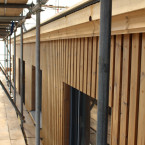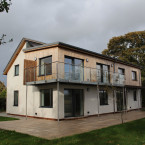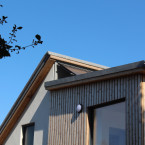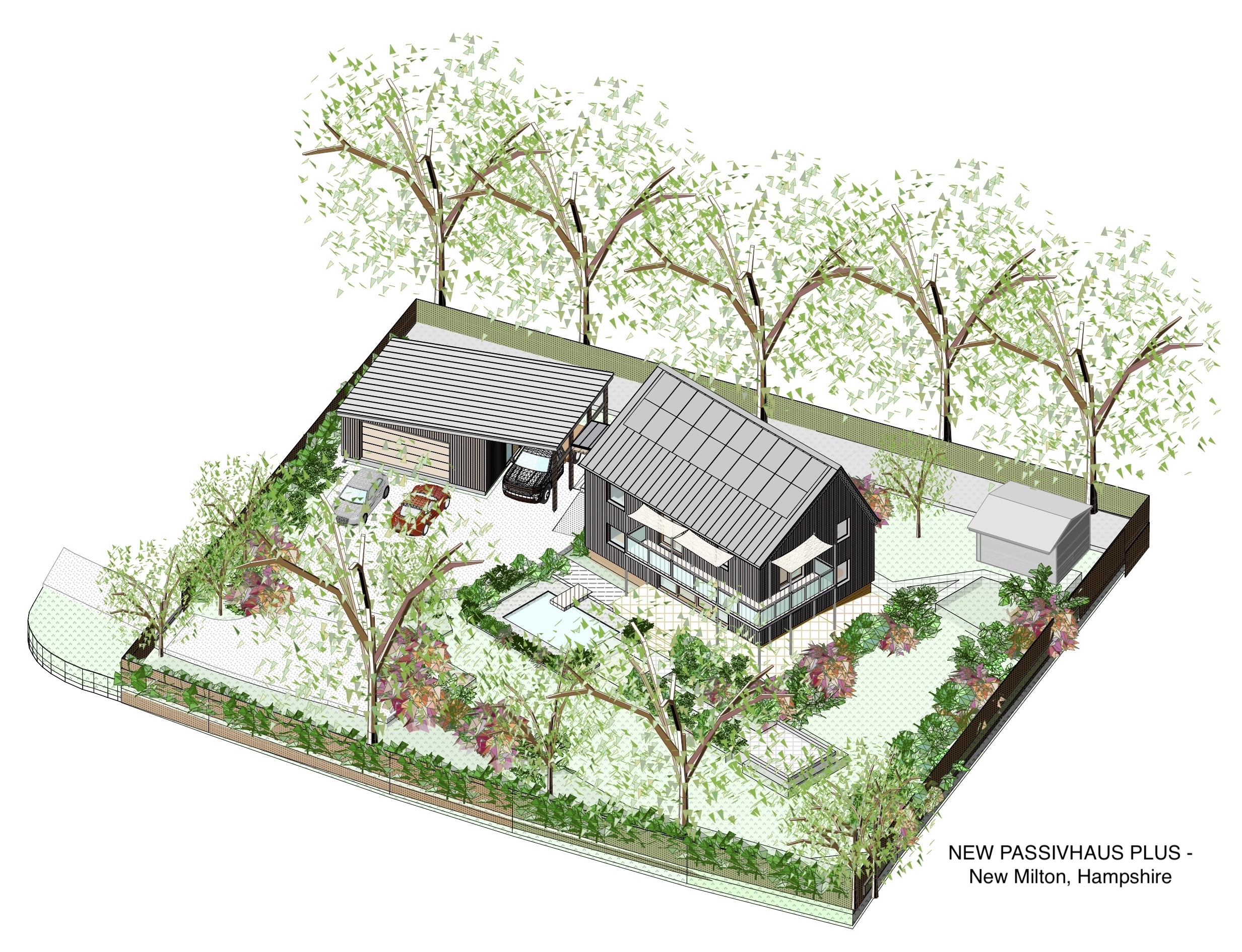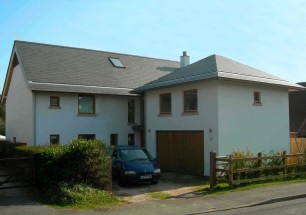New three bedroom detached house to replace existing house
The site is situated within a well developed housing area but is directly adjoining the New Forest Park Authority. As such, prominence is given to the design in relation to the views from the National Park. The design reduces the height of the house by using a steeply pitched roof with lower eaves level without significant loss of headroom to one side and a very low pitched roof to the other. Whilst this relates to a dormer roof, it covers the full length of the house with the advantage of no reduced height ceiling levels to the front area and simplified constructional and energy efficiency compared with a conventional dormer arrangement. The house is also rotated at an angle to the boundary which both reduces the potential overshadowing of the neighbour’s garden and, being closer to a south orientation, increases the solar exposure of the main windows. Advantage is taken of the views out from the house by the use of first floor doors opening onto a balcony which also acts to control high level summer sun.
The form of the house provides a compact volume to floor area which assists with the energy performance and, together with the high levels of insulation and levels of airtightness, achieves a low energy house designed to meet the Passivhaus standard.
The materials have been selected to relate to the surrounding area most notably the rendered walls of the adjacent house are echoed in the first floor walls adjacent to this boundary and the ground floor of the house with the upper walls of the house facing the National Park being clad in timber boarding. The latter is included to reduce the visual impact of the house by the colour of the timber and the verticality relating to the surrounding trees which provide significant screening of the house. Plain clay tiles have been selected to provide a quality finish to the pitched roof facing the neighbouring houses with the very low pitch being formed in weathered zinc alloy. The junction between the two roof planes provides screening for a range of solar panels for hot water and a contribution towards the house electricity usage as well as electric car charging for which the cable has been laid.
The new house achieved planning permission and the design was checked prior to construction and confirmed to meet the Passivhaus standard. Work started on site in November 2018 and the foundations and floor slab completed before the end of that year. The timber frame construction started on site in January 2019 and the house is now completed. The final air test achieved a result of 0.26 ACH which is less than half that required at 0.6 ACH. The house has been certified as a Passivhaus Classic and is only a heat pump (in lieu of the gas boiler) and 4 solar PV panels short of acheiving Passivhaus Plus which would make it net zero energy. It is anticipated that the changes would be made and battery storage of electricity introduced when the technology and costs improve over the next few years.
